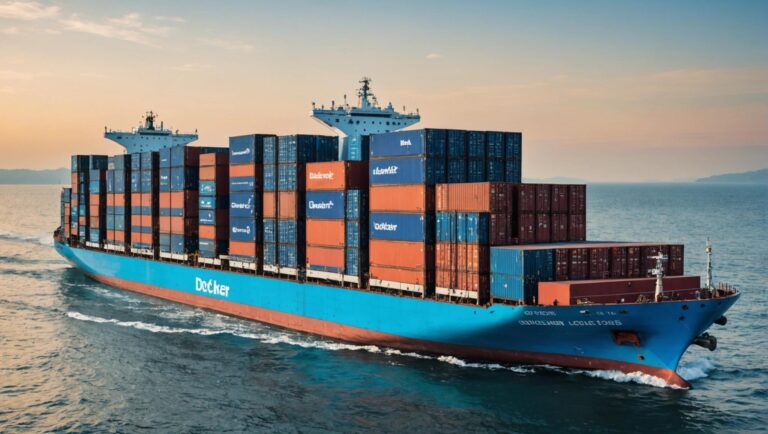Transform Your DevOps with Security-First Pipelines

Security-first pipelines integrate robust security measures right from the software development life cycle’s commencement, ensuring that security is not an afterthought but a foundational component. This proactive stance shifts the paradigm from traditional DevOps to DevSecOps, where development, security, and operations converge harmoniously. Prioritizing security from the outset not only fortifies the software against threats but also instills a security-first mindset across the team, fostering an environment where security is embedded in every aspect of the development process.
Step 1: Embrace a Culture of Security
Transitioning to a security-first approach in DevOps begins with a foundational change in organizational culture. It’s imperative to instill a sense of collective responsibility towards security within development teams. Rather than viewing security as a siloed function, under the purview of a designated team, it’s the collaborative effort across all departments that fortifies an organization’s defense mechanisms. This paradigm shift ensures that security considerations are an integral part of the development process from the outset.
Security, often misconceived as solely the security team’s domain, must become a shared accountability. Every developer, engineer, and IT professional plays a crucial role in maintaining and enhancing security measures. It’s about fostering an environment where security is as natural and essential as quality code and system performance.
To promote a security-first culture, several strategies can be employed. Ongoing education is vital, ensuring that team members are up-to-date with the latest security practices and threats. Additionally, appointing security champions within teams can act as a catalyst for maintaining security consciousness. These champions serve as advocates for security best practices and help integrate these principles into daily workflows. Such strategies not only elevate the security posture but also contribute to a more security-centric organizational ethos.
Step 2: Incorporate Security at the Start
The genesis of robust DevOps practices lies in the foundational incorporation of security. Addressing security concerns at the outset of pipeline design not only fortifies the development process but also ingrains a mindset that security is an integral component, not an afterthought. It is imperative to weave security into the very fabric of pipeline architecture to mitigate risks from the beginning.
Integrating security tools and practices early in development is akin to building a house on a solid foundation. It is essential to embed security scans, threat modeling, and compliance checks into the initial stages of the software development lifecycle. This proactive stance ensures that vulnerabilities are identified and rectified swiftly, thereby enhancing the overall security posture of the final product. Cloud Security Web recognizes this necessity and provides a granular analysis of API integration landscapes, empowering organizations to pinpoint exactly where to start with security-first pipelines.
Cloud Security Web’s comprehensive approach extends beyond mere identification; it encompasses strategic planning and deployment of security measures tailored to the unique contours of an organization’s technological infrastructure. By prioritizing security at the commencement of pipeline creation, companies are better equipped to navigate the ever-evolving cybersecurity landscape with confidence and resilience.
Step 3: Continuous Security Integration and Testing
In the realm of DevOps, the incorporation of security into continuous integration (CI) and continuous delivery (CD) processes marks a significant evolution towards a more resilient development pipeline. By embedding security measures into every phase, CI/CD pipelines become more than just a pathway for rapid deployment; they transform into robust frameworks that prioritize the safety of the end product from the outset.
Automated security testing is not merely an add-on in these pipelines; it is a cornerstone that provides immense benefits. By automating the security checks, teams can identify vulnerabilities at lightning speed, significantly reducing the risk of security breaches. This automation ensures that security testing keeps pace with the accelerated development cycles, allowing for immediate remediation of any issues discovered.
At Cloud Security Web, understanding the importance of maintaining security standards without sacrificing development speed is fundamental. That’s why we offer a pre-built integration code repository that helps in preserving the integrity of security-first pipelines. This resource enables developers to integrate security measures seamlessly and efficiently, reinforcing the security-first approach while streamlining development processes.
Step 4: Monitor, Audit, and Improve
In the dynamic landscape of DevOps, the importance of constant vigilance cannot be overstated. A robust security-first pipeline mandates continuous monitoring and auditing to not only ensure compliance with relevant standards but also to detect vulnerabilities that could compromise the integrity of the entire system. This proactive approach to security keeps systems resilient against evolving threats.
Effectively leveraging monitoring tools within the pipeline is a critical component of this step. These tools must be carefully selected and configured to provide real-time alerts and actionable insights, allowing for swift remediation of any identified issues. It’s not just about having the tools in place; it’s about optimizing their use to create a seamless and secure development workflow.
Regularly reviewing and improving security measures is the cornerstone of a security-first approach. At Cloud Security Web, we advocate for a systematic review process, guided by our six-step process for assessing and improving API and integration management. This process entails a thorough examination of the existing security landscape, identifying performance gaps, reliability issues, and security weaknesses, and then formulating a strategy for enhancement. This continuous cycle of evaluation and improvement ensures that security measures evolve in tandem with new threats and organizational changes, sustaining the rigor of a security-first pipeline.
Key Steps for Transforming Your DevOps Team into a DevSecOps Force
As organizations look to evolve their DevOps practices, the inclusion of a security-first approach becomes paramount. It’s no longer a question of if, but rather how to embed security into the very fabric of the development and operations process. This transformation extends beyond mere tools and technologies; it demands a fundamental change in the collective mindset.
The journey to becoming a DevSecOps force necessitates a comprehensive strategy that marries the technical aspects with a cultural shift. On the technical front, teams must integrate security tools into their continuous integration and continuous deployment (CI/CD) workflows from the outset. These tools should automate security checks, static code analysis, and vulnerability assessments, ensuring that every piece of code is scrutinized for security flaws before it moves further down the pipeline.
However, the cultural shift might present a greater challenge. It requires fostering an environment where security is everyone’s responsibility. This shift in perspective involves training teams to prioritize security, establishing clear policies, and incentivizing secure practices throughout the development lifecycle. By elevating security to the same level as efficiency and speed in the DevOps paradigm, organizations can champion a truly holistic approach.
Ultimately, the transformation to a DevSecOps force is a continuous journey that involves learning, adapting, and improving. It’s a commitment to better practices that not only enhance security but also promote a more resilient and robust operational stance. Embrace the change, and let the security-first pipeline lead the charge towards a more secure future in software development and operations.
Overcoming Bottlenecks with Security-First Pipelines
In the fast-evolving world of DevOps, bottlenecks can abruptly halt the momentum of development, leading to delayed deployments and compromised code quality. A security-first approach within DevOps pipelines emerges as a pivotal strategy to address these bottlenecks. By embedding security measures at the outset, teams can prevent the cascading effects of security-related delays that typically emerge later in the development cycle.
Cloud Security Web recognizes these challenges and offers a transformative solution. By leveraging security-first pipelines, Cloud Security Web facilitates the construction of connected business systems that not only surpass these common impediments but also adhere to stringent compliance standards. This ensures that security considerations are not an afterthought but an integral part of the continuous integration and continuous delivery process, thus eliminating disruptions and fostering a seamless workflow.
Whether it’s a matter of inefficient code practices, unclear communication among teams, or the late discovery of vulnerabilities, a security-first methodology proactively addresses these issues. Cloud Security Web’s expertise in this domain helps organizations to preemptively identify and resolve security concerns, which might otherwise lead to significant bottlenecks. The result is a more resilient, efficient, and secure DevOps pipeline that aligns with modern cybersecurity demands.
The Benefits of Security-First Pipelines
When it comes to modern software development, embracing a security-first approach in DevOps pipelines is not just beneficial; it’s imperative. Implementing security-first pipelines brings forth a multitude of advantages, central among them being enhanced protection against cyber threats. In today’s digital landscape, safeguarding applications and data is paramount, and security-first pipelines are a formidable defense, providing robust security measures that are ingrained in the development process from the start.
Moreover, compliance with regulatory standards is another significant benefit. Security-first pipelines are designed with compliance in mind, ensuring that from the earliest stages of development, the software adheres to necessary legal and industry-specific requirements. This proactive stance on compliance drastically reduces the risk of costly violations and the associated reputational damage.
Furthermore, organizations stand to gain from a reduction in overall risk. By identifying and addressing vulnerabilities early, security-first pipelines minimize the potential for security breaches, which can lead to data loss, service disruption, and financial liabilities. The early mitigation of risks not only protects the organization but also preserves customer trust, an invaluable asset in the digital economy.
Transitioning to a security-first mindset, however, requires expertise and a strategic approach. This is where Cloud Security Web comes into the picture, supporting organizations in realizing the full potential of security-first pipelines. With a team of professional staff that excels in cloud security and API integration, Cloud Security Web offers comprehensive IT services designed to fortify DevOps pipelines. From assessing current security postures to implementing best practices and providing ongoing support, Cloud Security Web equips businesses with the necessary tools and knowledge to navigate the complexities of DevSecOps.
In summary, the shift to security-first pipelines is a strategic move that enhances protection, ensures compliance, and reduces risk. And with the support of Cloud Security Web, organizations can confidently embark on this transformative journey, securing their operations and future-proofing their developments against an ever-evolving threat landscape.
Conclusion: The Future Is Security-First
In reflection, transforming DevOps with security-first pipelines emerges not just as a trend but as a fundamental shift in how we approach software development and IT operations. This blog has traversed the essential steps needed to integrate security at the core of DevOps practices—emphasizing the creation of a security-minded culture, beginning with security in mind, integrating security at all stages, and the necessity for continuous monitoring and improvement.
The transition to security-first pipelines is a strategic move that secures not only our applications and infrastructures but also fortifies our organizational resilience in the long run. By embracing this approach, organizations can enjoy a myriad of long-term benefits. These include fortified defense against cyber threats, enhanced compliance with regulatory standards, and a robust foundation for sustainable and secure growth.
Looking ahead, the trajectory is clear—security will continue to be an integral and critical element of DevOps, shaping the way we build, deploy, and manage applications. As the digital landscape evolves, so too must our practices, always with an eye towards anticipating and preemptively addressing the security challenges of tomorrow.
Secure Your Pipeline
As we embrace the future of DevOps, integrating security-first pipelines is paramount for ensuring robust and reliable systems. Cloud Security Web stands at the forefront, ready to guide your transformation with our comprehensive resources and expertise.
For a deeper dive into how to integrate security-first pipelines into your DevOps processes, we invite you to visit Cloud Security Web . Our suite of services and professional staffing solutions are specifically tailored to reinforce your API integration and cloud security, ensuring both performance and compliance.
Begin your journey toward seamless development with our API integration assessment , or expand your knowledge through our Integration Best Practices Library . And if you’re ready to enhance your pipeline with expert support, our team is here to assist. Reach out via our contact section for personalized assistance in implementing security-first pipelines that stand the test of time.







